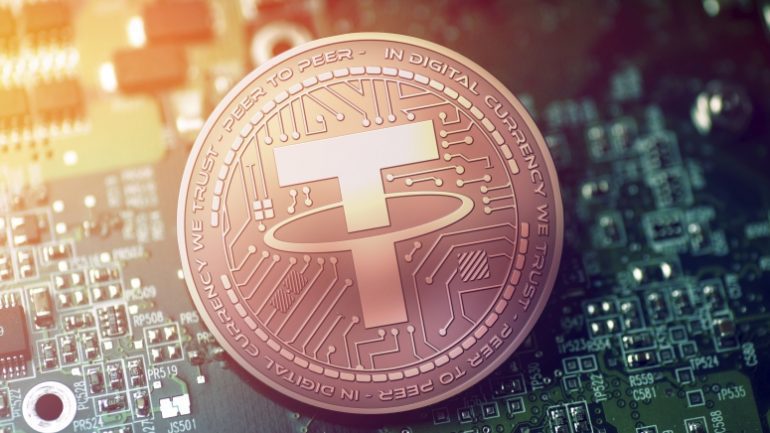Tether (USDT) is a digital currency launched in 2015 by Tether Limited –a Chinese outfit.
While Tether USDT is based on the Bitcoin blockchain, the digital currency, unlike most other cryptocurrencies, maintains a value which is hardly affected by fluctuations in the demand and/or supply of Tether.
Tether (a Chinese outfit and creator of Tether USDT) offers digital tokens which are backed by the outfit’s native fiat currency (USD).
Essentially, the driving philosophy behind the creation of Tether is that cryptocurrencies are highly volatile and there’s the need to minimize their degrees of volatility.
Put simply, USDT (or Tether USDT) is the cryptocurrency of Tether and as you read this article further, you’ll learn more about USDT as well as how the Tether company works.
How Does Tether Work? Understanding the Tether Network

Operationally, Tether revolves around three layers namely the Bitcoin blockchain, Omni Protocol and Tether Limited. The second layer (Omni Protocol) is adapted for multiple purposes including creating a cryptocurrency, terminating the cryptocurrency and monitoring its circulation. Omni Protocol further facilitates the storage and peer-to-peer transaction of USDT and fiat.
Tether Limited –which is alternatively described as Tether’s third layer –is saddled with a number of responsibilities including (i) issuance of cryptocurrencies to Tether users (ii) collection of fiat currencies from Tether users (iii) maintenance of reserves (iv) incorporating the Tether cryptocurrency into wallets, exchanges and other projects.
Explanatorily, Tether works in a pretty simple pattern in which Tether Limited receives the fiat currency submitted by a Tether user. Following this, the Tether user will be supplied with USD Tether (by Tether Limited) in exchange for the fiat currency submitted. Notably, The Tether wallet of this user will be credited with USD Tether equivalent to the amount of fiat currency submitted.
As a Tether user, you may want to reconvert your Tethers into fiat currency. In this case, you’ll have to submit the Tethers to Tether Limited. With that done, Tether Limited will then be in the position to credit your bank account with fiat currency.
Trading in Tethers
You can make use of any Tether-compatible exchange for the purchase of Tethers. Also, your Tether USDT wallet lets you conveniently receive/send Tethers to/from other Tether users. Performing a Tether transaction (receiving or sending Tethers) is very easy as you only have to comply with a procedure almost like that of Bitcoin.
Top 3 Wallets for Storing Tether USDT
Tether USDT is storable in a decent number of hardware wallets. In terms of security and ease of use, below are the best 3 hardware wallets for storing Tether USDT:
- Trezor (Trezor T and Trezor One models)–considered among the best versatile hardware walletsfor cryptocurrency storage; compatible with Tether and over 1000 other cryptocurrencies.
- Ledger Nano (Nano S and Nano X models)–considered excellent hardware wallets for the option of offline storage; provide a substantial degree of security courtesy of the offline storage
- Bitfi (Bitfi Knox model)–considered a great hardware wallet which has been lauded for being “unhackable”
What Are the Pros of Using Tether?
Expeditious transactions –if there are truly reasons to prioritize Tether over majority of the other cryptocurrencies out there, one of those reasons is Tether’s speedy transactions. There’s no need stressing that you may have to wait for days while expecting withdrawals from foreign exchanges to be completed. However, Tether significantly removes this waiting period, ensuring that your transactions go through within seconds.
Price stability –Tether’s USDT is hardly affected by market fluctuations. Rather than depending on market forces, the price of Tether USDT is determined by the normal market price of the US dollar. This, alternatively, translates into the fixed standard of $1 equates 1 USDT. This cogent assurance of price stability is clearly one of the advantages of Tether USDT over many other cryptocurrencies.
Conclusion
We hope reading this article has given you an in-depth understanding of Tether USDT and how the Tether network operates.





